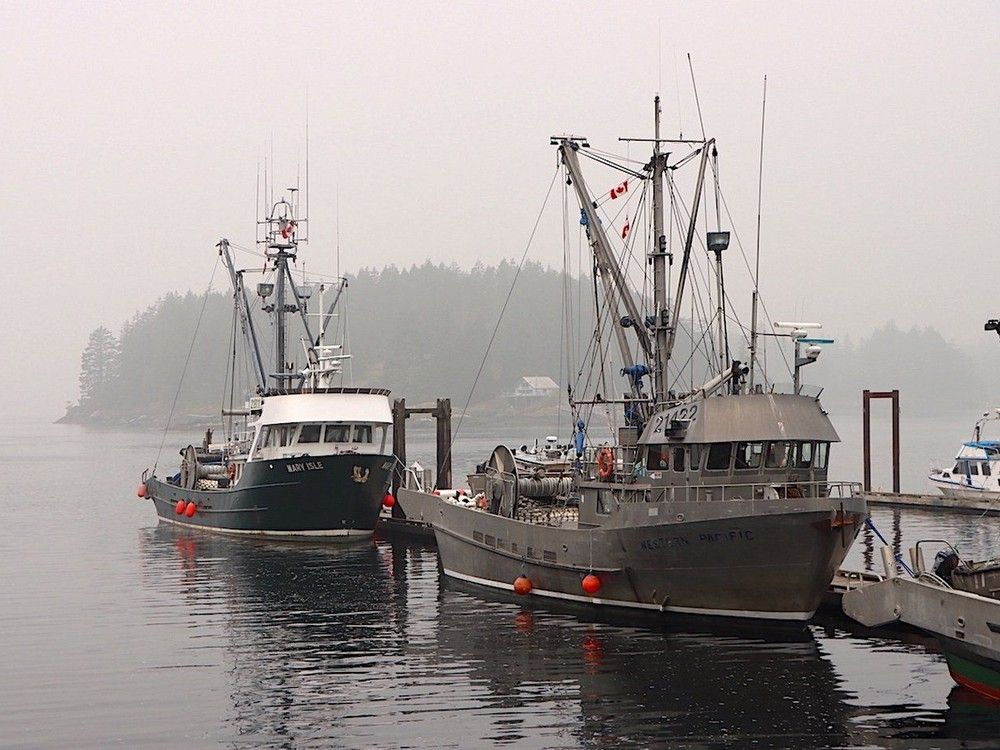I have seen boats like these fishboats, carry explosives, commercial divers (without decompression chamber as most commercial dive operations don't have one handy). Run sidescan and ROV. Comms would be whatever the RCN puts on them. Analysing data would require some training, but again that would be up to the RCN to decide. Since they be operating in the same area pretty much all of the time, they would get to know it pretty quick. With the MCDV going out the door, if a conflict happens in the next few years, this is what you are going to have to use, as don't have a lot of other options.
There is this as well that I suspect the RCN would take over. Whatever you do, until the RCN buys a dedicated MCM vessel you have to make do and I suspect the AOP's will have a lot on their plate as well beyond doing repetitive scans of St of Juan De Fuca to Vancouver harbour and the St Lawrence Seaway.
Yes you probably have in the civilian world, but this is not the civilian world. You suggest that we could just use fishboats or small commercial hulls for mine countermeasures now that the Kingston Class are going out of service but we still will have that capability for a few more years. Sure, you
can hang a side scan or a small ROV off a workboat, but that doesn’t suddenly make it a naval MCM platform and that's what I'm talking about. Off our harbour approaches you could probably maintain a small capability with heavy shore support. Anything else its not going to happen because you need that self contained capability especially overseas.
Those civilian hulls aren’t degaussed, shock-rated, or compartmentalized. One mine detonation or even a magnetic influence sweep and you’re looking at total loss. They also lack redundancy, endurance, and damage control systems, some of which were designed into the Kingston Class for a reason. It’s fine for survey or training tasks in benign conditions, but not for sustained operations or actual mine warfare.
The RCN’s route survey work in the past was tightly integrated, calibrated sonars, encrypted networks, and trained operators who could interpret what they were seeing. That’s not something you replicate by “making do.” It takes dedicated gear, training, and system integration. It's much more than throwing some gear in a long liner or fish boat. It also takes a lot of experience and training analyzing data looking for mine like objects.
To be fair, the RCN isn’t asleep at the wheel. The Autonomous Mine Countermeasures (A-MCM) and Remote Naval Autonomous Systems (RNAS) programs are already trialing, SeaFox, and ARCIMS systems that can be embarked on the AOPS, frigates, or even JSS. We already have REMUS operating in theater. That’s a good step, but it’s still a stopgap.
The Harry DeWolf-class will already have their hands full with Arctic sovereignty, SAR, and northern logistics. Expecting them to spend months doing repetitive seabed scans in confined waterways isn’t realistic. If anything, we need a purpose-built MCM vessel to take that load off the AOPS , a proper low-signature, shock-resistant, modular platform designed from the keel up for that mission set. What you posted pictures of is not it.
Jury-rigged fishing boats might fill a temporary niche, but they won’t build or sustain a credible MCM capability. If we’re serious about protecting our approaches, ports, and subsea infrastructure, we need a purpose-built solution, not another round of “make do with what we’ve got.”







